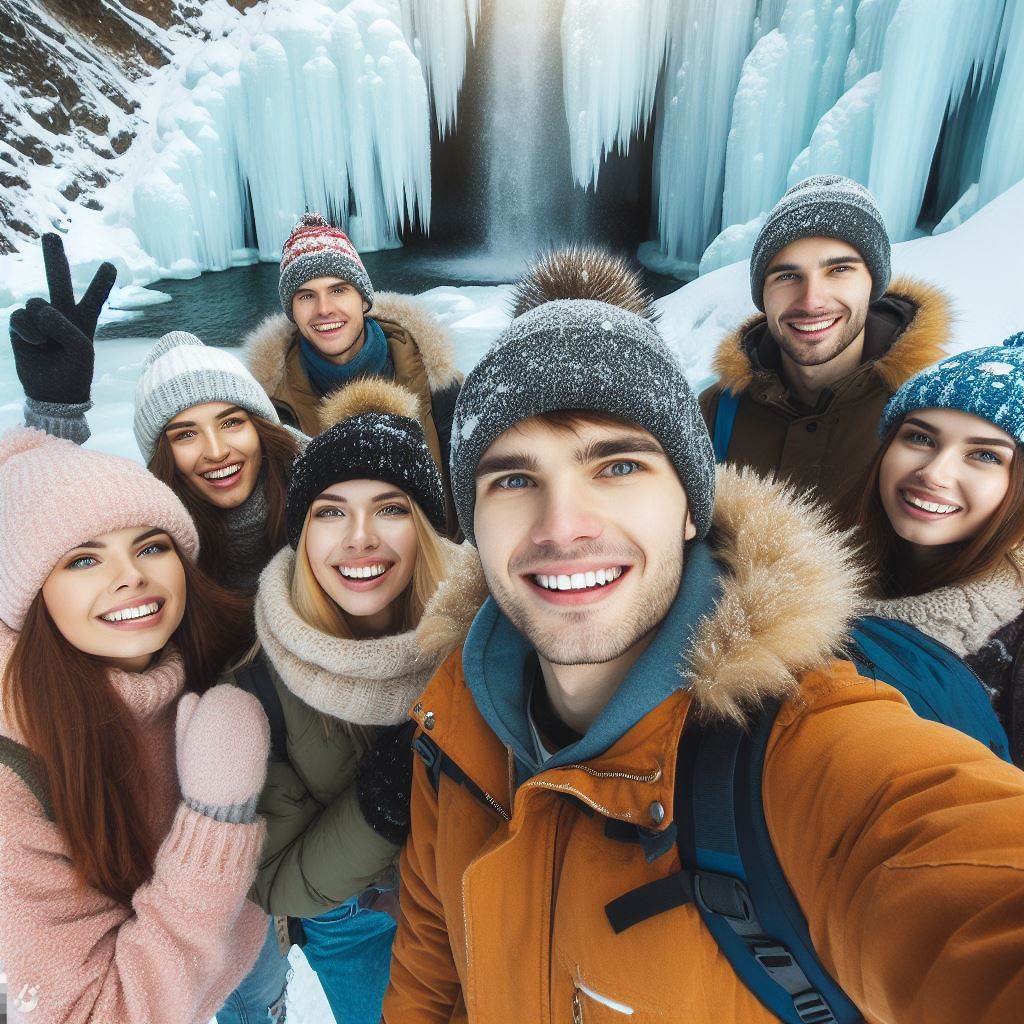Introduction
Tourist safety is a paramount concern for guides, as it ensures a successful and enjoyable experience.
In many countries, the tourism industry contributes significantly to the national economy.
Tragically, accidents and crimes can occur, posing risks to tourists and tarnishing the reputation of guides.
Guides must prioritize safety measures in order to protect their guests and maintain a positive image.
According to a recent study, 85% of tourists consider safety as a decisive factor when choosing a travel destination.
Furthermore, guides play a crucial role in providing a safe environment and ensuring tourists’ well-being.
A single incident can rapidly spread through social media platforms, leading to a significant decrease in tourist visits.
To avoid such negative consequences, guides must adhere to strict safety guidelines and take proactive measures.
Being well-prepared and knowledgeable on safety procedures instills confidence and trust in tourists.
Overall, tourist safety is not just a responsibility but also an opportunity for guides to foster a positive reputation.
The Role of a Tour Guide in Ensuring Tourist Safety
When it comes to tourist safety, tour guides play a crucial role in providing a safe and enjoyable experience for travelers.
Their responsibilities and duties extend beyond simply showing tourists around; they act as leaders and facilitators of the entire journey.
To successfully carry out their duties, tour guides need to be knowledgeable, prepared, and proactive in identifying and mitigating potential safety risks.
Responsibilities and Duties of a Tour Guide in Relation to Tourist Safety
- Thorough Planning: A tour guide should meticulously plan the itinerary, considering safety measures and potential risks in each location.
- Transportation Safety: Guides ensure that transportation arrangements are safe, including checking the condition of vehicles and ensuring drivers adhere to safety regulations.
- Knowledge of Local Laws and Regulations: Guides should be well-versed in local laws and regulations to avoid any safety violations and protect tourists from legal issues.
- Emergency Preparedness: Guides must be trained in first aid and emergency procedures, promptly addressing any health crises or accidents during the tour.
- Constant Vigilance: Guides should maintain a watchful eye on tourists, continuously monitoring their well-being and promptly addressing any concerns or discomfort.
- Clear Communication: Guides must effectively communicate safety instructions, including guidelines for crossing roads, awareness of local customs, and potential dangers.
The Guide’s Role as a Leader and Facilitator of a Safe and Enjoyable Experience
A tour guide acts as both a leader and a facilitator, ensuring tourists have a safe and enjoyable experience throughout their journey.
They serve as a point of reference, guiding clients through unfamiliar territory and providing valuable insights.
In addition to leading, guides facilitate by coordinating activities, managing group dynamics, and fostering a positive environment.
This includes promoting respect among tourists and locals, ensuring appropriate behavior to prevent conflicts and accidents.
By being knowledgeable about the destination’s history, culture, and geography, guides can impart valuable information while enhancing tourists’ understanding and appreciation of their surroundings.
A well-informed guide not only adds value to a trip but also safeguards against potential safety risks by helping tourists make informed decisions.
The Need for Guides to be Knowledgeable and Prepared for Potential Safety Risks
Knowledge and preparedness are paramount for tour guides to manage potential safety risks effectively.
Guides should stay updated on recent events, weather conditions, and any safety advisories issued by local authorities.
Effective risk management includes identifying and addressing potential hazards in advance.
Guides need to assess factors such as unstable terrains, unpredictable wildlife encounters, or high-crime areas to develop appropriate contingencies and ensure the safety of the group.
Furthermore, guides must possess communication skills to relay safety information clearly and concisely to tourists.
They should encourage open dialogue, making tourists comfortable voicing their concerns or reporting any unsafe incidents.
In conclusion, tour guides play a vital role in prioritizing tourist safety during travel expeditions.
Through careful planning, constant vigilance, clear communication, and adequate preparedness, guides can create a safe and enjoyable experience for tourists.
By assuming the roles of leaders and facilitators, guides hold the responsibility of cultivating a positive environment while also ensuring the well-being of their clients.
Knowledgeable, prepared, and proactive guides can mitigate potential safety risks, enabling tourists to explore diverse destinations with confidence.
Read: How to Impress Clients in Canadian Event Planning
Preparing for a Safe Tour
Importance of thorough pre-planning and risk assessment by guides
When it comes to ensuring tourist safety, guides have a crucial role to play.
Thorough pre-planning and risk assessment are essential steps in this process.
By identifying and addressing potential safety hazards in the planned itinerary, guides can minimize risks and provide a safe experience for all.
One of the most important aspects of preparing for a safe tour is conducting a comprehensive risk assessment.
Guides need to thoroughly evaluate the potential dangers associated with each location included in the itinerary.
This includes considering factors such as local safety regulations, political stability, weather conditions, and health risks.
By carrying out a thorough evaluation, guides can make informed decisions to ensure the safety of the tour group.
Process of identifying and addressing potential safety hazards in the planned itinerary
Identifying and addressing potential safety hazards should be a continuous process throughout the planning phase.
Guides must have a keen eye for detail and be proactive in minimizing risks.
This includes examining transportation arrangements, accommodation options, and the activities included in the itinerary.
By working closely with local authorities and experts, guides can gather valuable insights to avoid any potential danger.
A significant aspect of ensuring tourist safety is the availability of reliable communication devices.
Guides should ensure that the tour group has access to effective means of communication at all times.
This includes providing each participant with a reliable mobile phone and discussing emergency contact procedures.
In case of any unforeseen circumstances or emergencies, the ability to communicate quickly and efficiently can make a significant difference in ensuring the safety and well-being of the group.
The significance of ensuring the tour group has access to reliable communication devices
Emergency preparedness is an essential element of tourist safety.
Guides should develop a comprehensive emergency response plan that covers various potential scenarios.
This includes providing clear instructions and guidance to the tour group on what to do in case of emergencies, such as natural disasters or medical emergencies.
Regularly reviewing and rehearsing these emergency procedures will help ensure that everyone is well-prepared and can act swiftly if needed.
Furthermore, guides must stay up-to-date with the latest safety information.
They should be knowledgeable about any recent incidents or safety warnings in the destinations included in the tour.
This includes monitoring warnings issued by government travel advisories and maintaining contact with local authorities.
By being well-informed, guides can make informed decisions regarding the safety of the tour group.
In conclusion, preparing for a safe tour requires thorough pre-planning and risk assessment by guides.
By identifying and addressing potential safety hazards, ensuring reliable communication devices, and developing comprehensive emergency response plans, guides can prioritize tourist safety and provide a secure travel experience.
With careful preparation and proactive measures, guides can minimize risks and create unforgettable and safe journeys for tourists.
Read: Networking Tips for Event Planners in Canada

Ensuring safety during transportation
Ensuring safety for tourists during transportation is a crucial responsibility for guides.
It is their duty to prioritize the well-being and security of the entire tour group throughout the journey.
The Guide’s Responsibility in Ensuring Safe Transportation
A knowledgeable and attentive guide plays a key role in creating a safe transportation experience for tourists.
They must ensure that the vehicles chosen for transportation are reliable, well-maintained, and meet all safety standards.
The guide should carefully select transportation providers who have a proven track record of safety and professionalism.
It is important to work with reputable companies that prioritize the well-being of their passengers.
The guide must take into consideration the size of the group, the distance to be covered, and the type of transportation mode suitable for the specific tour.
They should choose the most appropriate vehicle that can comfortably accommodate all tourists while adhering to safety regulations.
Before the journey begins, the guide should conduct a thorough inspection of the transportation vehicle.
They should ensure that all safety features such as seat belts, working brakes, and emergency exits are in good condition.
During the tour, the guide must continuously monitor the behavior of the driver or captain.
They should make sure that they follow traffic rules, avoid reckless driving, and prioritize the safety of the passengers.
The Importance of Selecting Trustworthy Transportation Providers
Selecting trustworthy transportation providers is crucial to ensure the safety of the tour group.
A reliable provider will have well-trained and licensed drivers or captains who prioritize safe driving practices.
Unlock Your Career Potential
Visualize a clear path to success with our tailored Career Consulting service. Personalized insights in just 1-3 days.
Get StartedTrustworthy transportation providers also maintain their vehicles regularly to minimize the risk of mechanical failures during the journey.
This reduces the chances of accidents or breakdowns that could potentially endanger the safety of the tourists.
In addition, reputable providers typically have insurance coverage that protects the passengers in the event of an accident.
This gives the tourists peace of mind, knowing that they are well-covered and protected during their travels.
The Role of Guides in Educating Tourists about Safety Protocols during Transportation
Guides have a crucial role in educating tourists about safety protocols and ensuring their compliance during bus, boat, or other modes of transportation.
Prior to the journey, the guide should conduct a safety briefing to familiarize the tourists with the safety procedures and guidelines they need to follow.
This includes information about emergency exits, how to use life jackets if traveling by boat, and general safety instructions.
Throughout the tour, the guide should reinforce these safety protocols to ensure that the tourists are constantly aware of them.
They should encourage passengers to wear seat belts, follow any instructions given by the driver or captain, and maintain a safe and respectful behavior during the journey.
In the event of an emergency or unexpected situation, the guide should be well-prepared to handle it efficiently.
They should have a clear plan in place and be trained in first aid and emergency response procedures.
Overall, ensuring tourist safety during transportation is a top priority for guides.
By selecting trustworthy transportation providers, prioritizing the safety of the tour group, and educating tourists about safety protocols, guides can create a secure and enjoyable travel experience for all.
Read: Building a Portfolio as a Canadian Event Planner
Keeping the group safe during activities and excursions
When it comes to guiding tourists, ensuring their safety throughout the trip is of utmost importance.
One of the primary responsibilities of a guide is to keep the group safe during activities and excursions.
Providing clear instructions and guidelines
A guide plays a pivotal role in providing clear instructions and guidelines to the tour group.
By doing so, they ensure that everyone understands the safety protocols and knows what is expected of them.
This helps prevent any potential accidents or mishaps.
Clear instructions should include information about any safety gear required for specific activities.
For example, if the group is going hiking or rock climbing, the guide must emphasize the importance of wearing helmets and harnesses.
Furthermore, the guide needs to communicate guidelines for behavior during the activities.
Whether it’s swimming, snorkeling, or zip-lining, tourists must be aware of any specific safety precautions they need to take.
Educating tourists about safety precautions
Alongside providing instructions, guides must also educate tourists about safety precautions that are specific to each activity or excursion.
This ensures that the tourists are equipped with the necessary knowledge to protect themselves.
In the case of water activities, such as kayaking or sailing, guides should educate tourists about how to use life jackets properly.
Understanding how to swim in case of unexpected emergencies should also be emphasized.
Similarly, for activities like trekking or wildlife safaris, guides should educate tourists on maintaining a safe distance from animals and avoiding any aggressive behavior that might provoke them.
Competent supervision and monitoring
During outdoor adventures or potentially risky activities, competent supervision and monitoring are vital.
Guides must keep a close eye on the group, assessing the situation and ensuring that everyone is safe and following the guidelines provided.
For instance, during a white-water rafting excursion, the guide needs to monitor the group’s progress, ensuring that they navigate the rapids safely and avoid any dangerous areas.
They should be capable of providing immediate assistance if needed.
In scenarios where the group is partaking in extreme sports like bungee jumping or skydiving, guides must collaborate with certified professionals who can offer expert supervision to minimize risks.
As tourist safety remains a top priority for guides, their active involvement in keeping the group safe is paramount.
By providing clear instructions, educating tourists about safety precautions, and ensuring competent supervision, guides can create a secure environment for memorable and enjoyable experiences.
Read: The Future of Event Planning in Canada Post-COVID
Handling emergency situations
In the realm of tourist safety, guides play a pivotal role in handling emergency situations.
A well-prepared guide acts as a guardian, equipped to deal with accidents or unexpected incidents efficiently.
Preparedness is key. Guides, armed with extensive first aid training, ensure the safety of tourists in any unforeseen circumstance.
Their readiness is not just a protocol but a commitment to the well-being of those under their care.
Importantly, having a safety plan in place is non-negotiable.
Guides meticulously devise plans that encompass potential risks, providing a structured response system.
This plan becomes their compass during emergencies, guiding both the guide and the tourists to safety.
First aid proficiency is a cornerstone. Guides are trained not just to lead but to heal.
Quick thinking and immediate response to injuries or health crises are part of their skill set, offering reassurance to tourists in times of distress.
Clear communication is paramount. Guides maintain open channels with local emergency services, ensuring a seamless collaboration if the need arises.
This cooperation is instrumental in expediting assistance, minimizing response time, and optimizing the chances of a positive outcome.
Cooperation extends beyond emergency services; it involves the tourists themselves.
Guides empower tourists with essential safety guidelines, fostering a collective responsibility for well-being.
This proactive approach creates a safety net where every member, guide, and tourist alike, plays a crucial role.
In conclusion, handling emergencies is an art mastered by guides through preparation, training, and collaboration.
Their dedication to tourist safety elevates the travel experience, ensuring that every journey is not just memorable but also secure.
Conclusion
Finally, prioritizing tourist safety is paramount for guides. Vigilance ensures enjoyable and secure travel experiences.
Guide competence, communication skills, and emergency preparedness directly impact tourists’ well-being.
To guarantee a safe journey, tourists must seek guides with proven safety records.
The responsibility falls on both guides and tourists to foster a culture of safety.
Establishing open communication channels and setting clear expectations enhance the safety dynamic.
Guides must stay informed about local regulations and adapt to changing circumstances swiftly.
Choosing safety-focused guides contributes to the overall success of a trip.
It’s crucial for travelers to research and select guides with stringent safety measures.
As the tourism industry thrives, the demand for safety-conscious guides escalates.
Readers are urged to prioritize safety when planning future trips and advocate for responsible tourism.
By supporting guides who prioritize safety, tourists actively contribute to creating a safer and more enjoyable travel landscape.
The collective effort in prioritizing safety enhances the industry’s reputation and ensures memorable and secure adventures for all.




